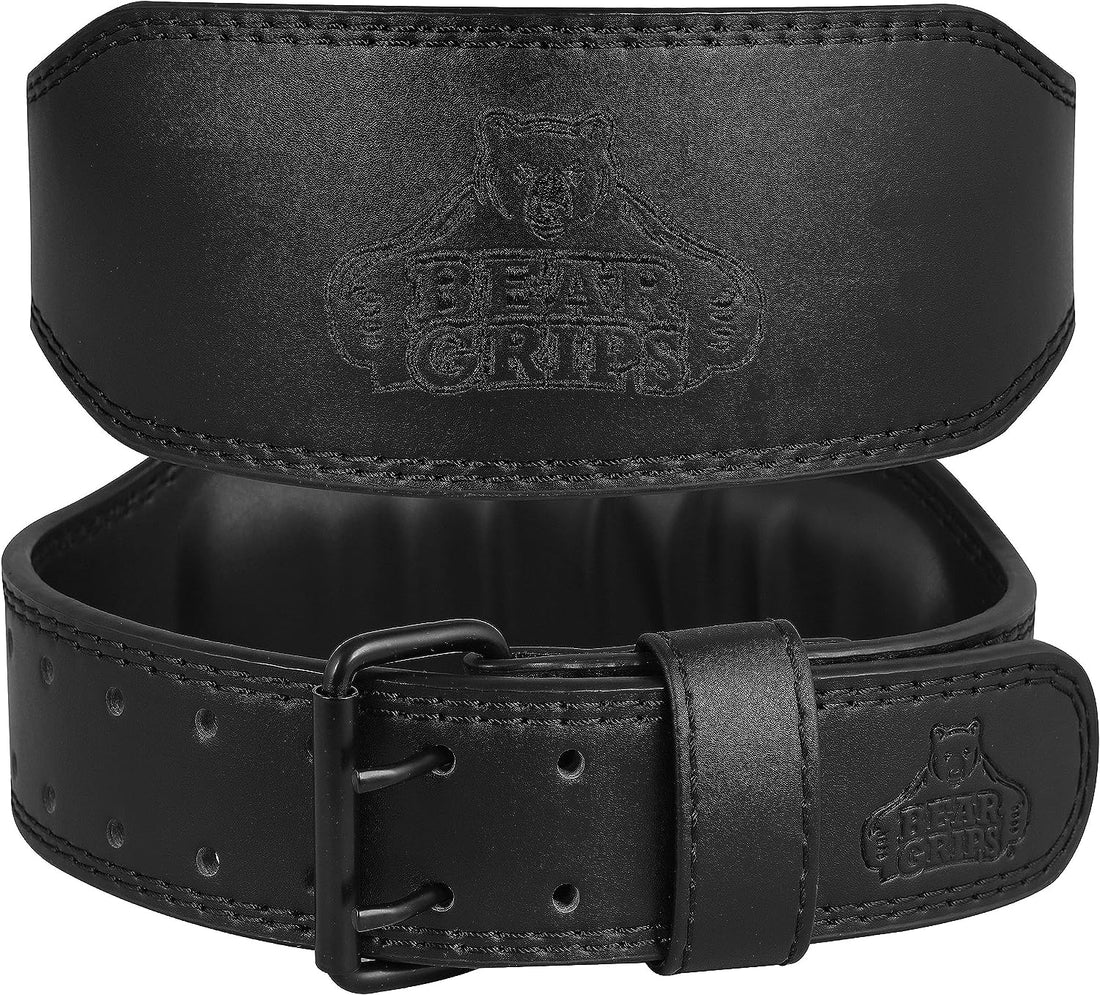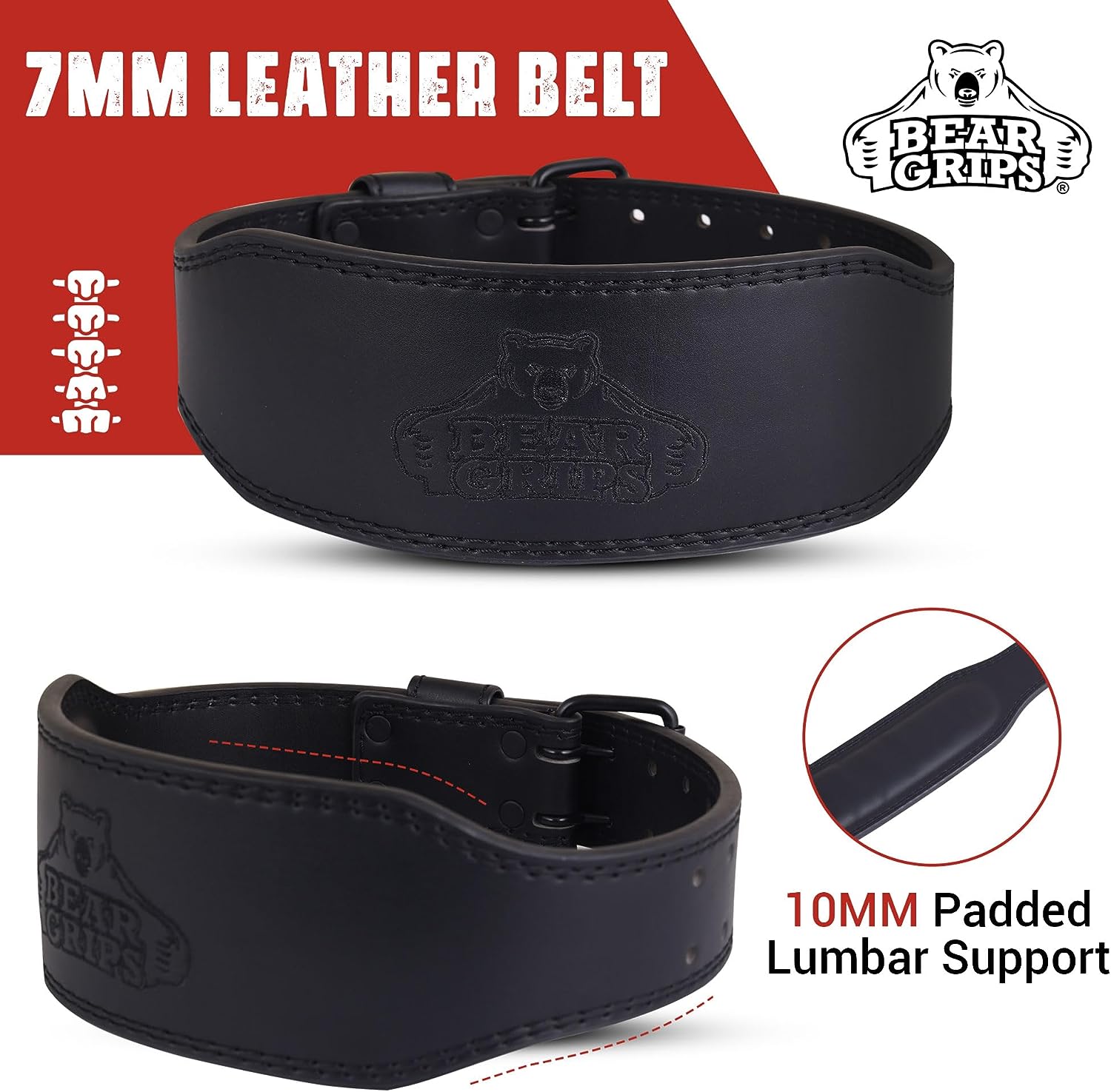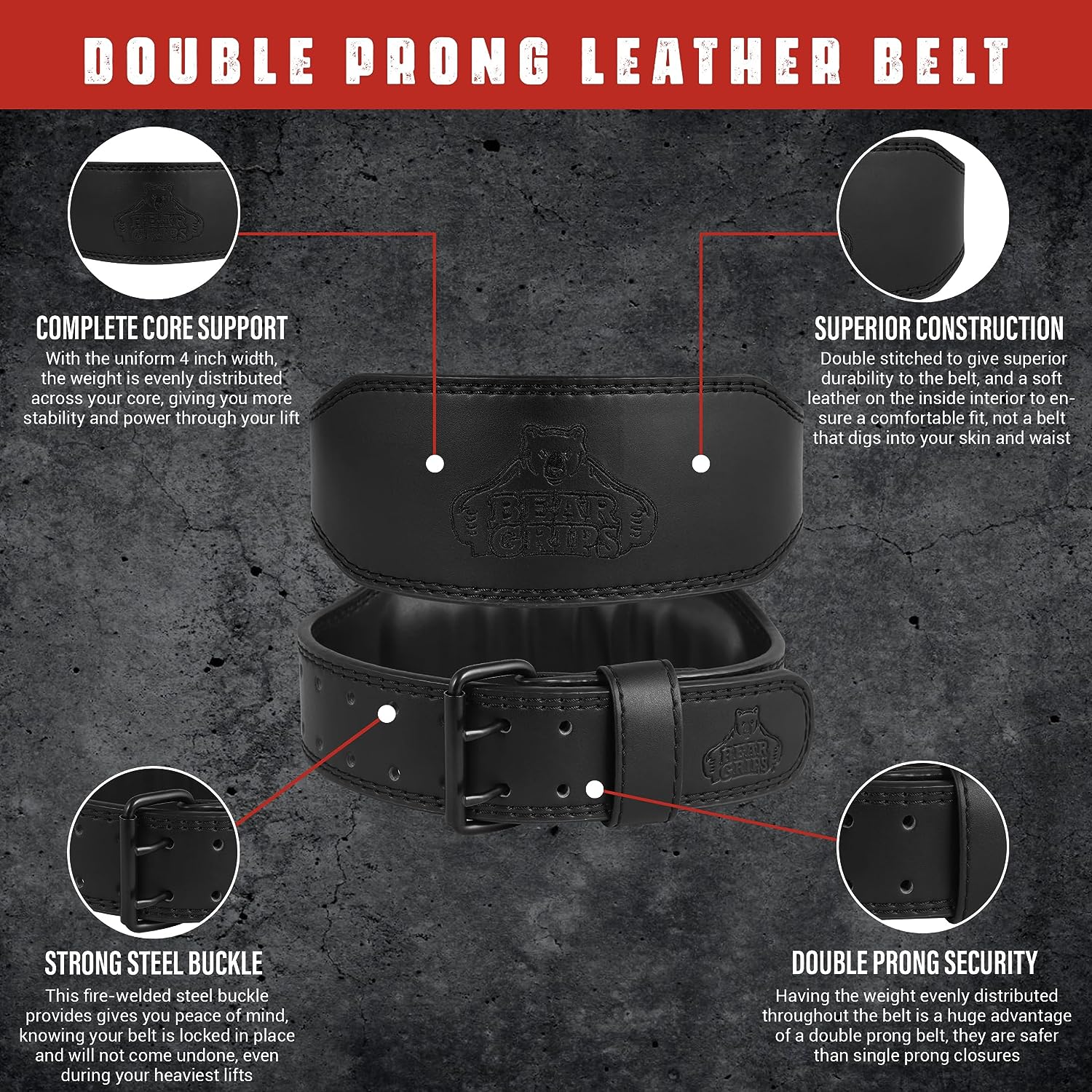
Do Weight Lifting Belts Help Lower Back Pain?
Share
Weight lifting belts are commonly used by athletes and fitness enthusiasts to provide additional support for the lower back during heavy lifting. But do these belts actually help with lower back pain relief? Let's explore the topic and understand the proper use and potential benefits of weight lifting belts in supporting a healthy back.
Weight lifting belts are designed to aid the core muscles in creating stability and increasing intra-abdominal pressure. By wearing a belt tightly around the stomach and properly bracing against it, individuals can enhance trunk stability and prevent bending or flexion under load. This can help prevent lower back injuries and provide maximum relief during intense lifting workouts.
Research has shown that using a weight lifting belt correctly can increase muscle activity in the lower back, generate more intra-abdominal pressure, decrease compressive forces on the spine, and help maintain correct posture. This not only improves overall stability but also boosts confidence and performance in lifting exercises.

Key Takeaways:
- Weight lifting belts can provide additional support for the lower back during heavy lifting.
- Proper use involves breathing into the belt and bracing against it to enhance stability.
- Using a weight lifting belt correctly can increase muscle activity and decrease compressive forces on the spine.
- A weight lifting belt should not be used as a solution for existing back pain or substitute for proper technique.
- Building core strength and maintaining proper form are crucial for preventing lower back injuries.
Why Use a Weight Lifting Belt?
A weight lifting belt is a valuable tool for enhancing stability and providing support to the lower back during heavy lifting sessions. By aiding the core muscles in creating intra-abdominal pressure (IAP), a weight lifting belt helps increase trunk stability and prevents bending or flexion under load. When combined with proper core bracing and breath control techniques, the belt amplifies the pressure inside the abdominal cavity, leading to enhanced overall stability and performance.
Research has shown that using a weight lifting belt can significantly increase IAP values and contribute to enhanced trunk stability during heavy lifts. This added stability not only reduces the risk of injury but also allows lifters to perform exercises more effectively and efficiently.
By wearing a weight lifting belt, lifters can ensure that their core muscles are properly engaged and working together to support the spine. This can have several benefits, including reduced strain on the lower back and improved lifting technique. The belt acts as a physical reminder to lifters to maintain proper form and posture, helping them avoid excessive spinal flexion and promoting optimal alignment.
Using a weight lifting belt, along with proper core bracing and breath control, can increase intra-abdominal pressure and enhance trunk stability during heavy lifts.
Whether you are a beginner or an experienced lifter, a weight lifting belt can be a valuable addition to your training routine. It can provide the stability and support needed to perform heavy lifts safely and effectively, especially when pushing your limits.
Remember, however, that a weight lifting belt is not a substitute for building core strength or using proper lifting technique. It should be used as a tool to supplement your training and not relied upon as the sole source of stability. Building a strong and stable core through targeted exercises and implementing proper lifting mechanics are crucial for long-term success and injury prevention.
Next, we'll explore how to use a weight lifting belt properly to maximize its benefits and reduce the risk of injury during weight lifting sessions.
How to Use a Weight Lifting Belt Properly
Using a weight lifting belt properly involves more than just wearing it tightly around the stomach. To get the maximum benefits of a belt, it is important to understand the proper techniques for use.
Breathing into the belt is a key aspect of proper belt usage. This involves expanding the stomach while wearing the belt, allowing the breath to fill the abdominal area. This technique helps create intra-abdominal pressure, providing additional support to the core muscles.
Furthermore, bracing against the belt is crucial for proper belt usage. By engaging the core muscles and bracing against the belt, lifters can enhance stability and increase the effectiveness of the belt. Simply cinching the belt tight without practicing proper breathing and bracing techniques will not yield the desired results.

Research has demonstrated that athletes who wear a weight lifting belt correctly are able to lift heavier weights with more explosive power. They are also able to maintain trunk stiffness during high-repetition maximum lifts. These findings highlight the importance of proper belt usage in maximizing performance and reducing the risk of injury.
To summarize, proper use of a weight lifting belt involves breathing into the belt, expanding the stomach, and engaging the core muscles through bracing against the belt. By implementing these techniques, lifters can derive the full benefits of a weight lifting belt for increased stability and support during their workouts.
When to Wear a Weight Lifting Belt
The decision to wear a weight lifting belt should be based on the individual's goals and circumstances. For elite athletes competing in strength sports like weightlifting or powerlifting, wearing a weight lifting belt can provide an extra level of support and stability, allowing them to lift heavier weights and push their limits.
However, for athletes training for other sports or individuals who do not have the desire to compete, limiting the use of a weight lifting belt to a minimum is recommended. It's important to prioritize building core strength and stability through exercises that target the muscles responsible for supporting the spine.
Wearing a weight lifting belt all the time can potentially weaken the core muscles and hinder their development. It's essential to allow the core muscles to work naturally and engage in exercises that promote their strength and function without relying solely on a belt.
It's crucial to note that a weight lifting belt should never be used as a solution for existing back soreness or pain. If you're experiencing back pain or discomfort during your workouts, it's essential to address the underlying cause of the pain and seek professional advice rather than relying on a belt for relief.
Remember, a weight lifting belt is a tool that can be used to enhance performance and provide additional support when used appropriately. It should be used strategically and in conjunction with proper technique, core strength training, and overall body alignment to maximize its benefits.
Key Takeaways:
- Weight lifting belts are beneficial for elite athletes competing in strength sports like weightlifting or powerlifting.
- For athletes training for other sports or individuals who do not have the desire to compete, limiting the use of a weight lifting belt is recommended.
- Wearing a weight lifting belt all the time can potentially weaken the core muscles and hinder their development.
- A weight lifting belt should never be used to address existing back soreness or pain.
- A weight lifting belt should be used strategically, in conjunction with proper technique, core strength training, and overall body alignment.
How a Weight Lifting Belt Supports the Back
A weight lifting belt provides essential support for the lower back by increasing muscle activity, generating more intra-abdominal pressure, and decreasing compressive forces on the spine.
Research has demonstrated that wearing a weight lifting belt can increase muscle activation in the erector muscles of the lower back, enhancing stability and rigidity in the torso. By supporting the lumbar spine and increasing intra-abdominal pressure, the belt helps to create greater core strength and stability.
One of the key benefits of using a weight lifting belt is its ability to provide external feedback and cue proper form. By maintaining correct posture and engaging the core muscles more effectively, individuals can better protect their lower back during lifts.
Overall, a weight lifting belt plays a vital role in not only supporting the lower back but also improving muscle activation, enhancing core strength, and reducing compressive forces on the spine.

Can a Weight Lifting Belt Prevent Back Pain?
A weight lifting belt can be a useful tool in preventing back pain by enhancing core stability and reducing compressive forces on the spine. However, it is important to understand that a weight lifting belt is not a foolproof solution on its own. While it can provide support during heavy lifts, it cannot fix poor lifting technique or compensate for a weak core.
To effectively prevent back pain, it is crucial to prioritize proper lifting technique, core strength development, and smart programming. Wearing a weight lifting belt can be part of an overall approach to back pain prevention, but it should not be relied upon as the sole method of protection.
By combining a weight lifting belt with proper technique, you can further decrease the risk of back pain and injury. The belt can help enhance core stability, reduce compressive forces on the spine, and provide feedback for maintaining proper form.
"A weight lifting belt can provide additional support and stability for the lower back, but it should never be seen as a substitute for proper technique or core strength. It is just one tool among many that can be utilized to prevent back pain." - Dr. Sarah Johnson, Sports Medicine Specialist
Proper technique should always be the foundation of any weight lifting routine. This includes engaging the core muscles, maintaining a neutral spine, and using proper form for each exercise.
Core stability plays a crucial role in preventing back pain. By strengthening the muscles in your abdomen, back, and pelvis, you can provide better support for your spine. Incorporating exercises that target the core muscles, such as planks and bridges, into your workout routine can help improve core stability.
Additionally, smart programming is essential for preventing back pain. This involves gradually increasing the intensity and volume of your workouts, listening to your body, and allowing for adequate rest and recovery. Overtraining and improper programming can increase the risk of injury, including back pain.
Tips for Proper Weight Lifting Technique
- Start with a warm-up to prepare your body for exercise.
- Focus on maintaining proper posture and alignment throughout each exercise.
- Engage your core muscles by bracing your abs and back.
- Use a weight lifting belt when performing heavy lifts, but do not rely solely on it for support.
- Breathe properly by inhaling before each lift and exhaling during the exertion phase.
- Practice good form and technique under the guidance of a qualified trainer or coach.
- Listen to your body and stop exercising if you experience any pain or discomfort.
Remember, a weight lifting belt is a tool that can enhance your lifting performance and help prevent back pain, but it should always be used in conjunction with proper technique, core stability exercises, and smart programming.
With the right approach, you can minimize the risk of back pain and enjoy the benefits of weight lifting while keeping your spine safe and healthy.
How to Properly Wear and Size a Weight Lifting Belt
Properly wearing and sizing a weight lifting belt is crucial for maximum effectiveness and injury prevention. To ensure the belt provides the necessary support and stability, follow these guidelines:
1. Positioning
Place the weight lifting belt above the iliac crest, which is the top of your hip bone. This positioning provides compression and stability to the lumbar spine, offering optimal support during heavy lifting. Avoid wearing the belt too low, as it may result in inadequate support and increase the risk of injury.
2. Tightness
The belt should be tight enough to provide support but not so tight that it restricts breathing or movement. A properly fitted belt allows for proper breathing techniques and core engagement while lifting. Remember, the belt is meant to enhance stability, not restrict your body's natural biomechanics.
3. Sizing
Choosing the right size weight lifting belt is essential. Measure your waist circumference at the level where you plan to wear the belt. Most weight lifting belts are sized based on waist measurements. Refer to the manufacturer's sizing chart to find the appropriate size for your measurements. A properly sized belt will ensure maximum comfort, support, and effectiveness.
Following these guidelines for wearing and sizing your weight lifting belt will help maximize its effectiveness in providing support, stability, and injury prevention during your workouts.
The Potential Risks of Using a Weight Lifting Belt
While weight lifting belts can be beneficial when used correctly, there are potential risks associated with their overreliance. Regularly relying on a weight lifting belt for support can lead to decreased core strength as the body becomes reliant on the passive support provided by the belt. This overreliance can weaken the core muscles and increase the risk of injury in the long run.
It is important to prioritize building core stability and strength without relying solely on a weight lifting belt. Incorporating exercises that target the core muscles, such as planks, Russian twists, and deadbugs, into your training routine can help maintain core strength and stability. Additionally, engaging in functional movements and compound exercises without the use of a belt can further enhance core strength and improve overall lifting mechanics.
Serious lifters are recommended to include both days of training with and without a weight lifting belt to maintain stability and core strength. By alternating between belt and beltless training, you can challenge your core muscles and ensure their continued development.
Remember, a weight lifting belt should not be relied upon as a crutch for weak or underdeveloped core muscles. It is essential to prioritize proper technique, form, and core strength development to reduce the risk of injury and optimize performance in the long term.
Conclusion
Weight lifting belts can be valuable tools for providing additional support and stability to the lower back during heavy lifting. When used correctly, these belts can help increase muscle activity, generate more intra-abdominal pressure, and decrease compressive forces on the spine, leading to maximum relief and better performance. However, it is important to note that weight lifting belts should not be seen as a solution for existing lower back pain or as a substitute for proper lifting technique.
To maximize the benefits of weight lifting belts, it is essential to focus on building a strong and stable core through targeted exercises. This, combined with maintaining proper form and technique, can help prevent lower back injuries. It is also crucial to use a weight lifting belt only when necessary and to not rely on it excessively. By alternating between training with and without a belt, individuals can maintain core strength and stability over the long term.
In summary, weight lifting belts can provide the necessary support and stability for the lower back, but they should be used in conjunction with a comprehensive approach to weight lifting. Proper use, along with developing core strength, maintaining correct form, and using a belt when needed, can help individuals prevent lower back injuries, achieve maximum relief, and enhance overall performance and stability in their weight lifting journey.
Try weight lifting belts from Bear Grips and unlock the true essence of weight lifting in your next workout!
Shop at Amazon.com Now!
FAQ
Do weight lifting belts help lower back pain?
Weight lifting belts can provide additional support and stability for the lower back during heavy lifting, but they should not be used as a solution for existing back pain. It is important to prioritize building a strong and stable core, maintaining proper form and technique, and using a belt when necessary to help prevent lower back injuries and maximize the benefits of weight lifting.
Why use a weight lifting belt?
Weight lifting belts are used to provide additional stability for the lower back by aiding the core muscles in creating intra-abdominal pressure (IAP), which increases trunk stability and prevents bending or flexion under load. Proper use of a belt can increase muscle activity in the lower back, generate more intra-abdominal pressure, decrease compressive forces on the spine, help maintain correct posture, and boost confidence and performance in lifting.
How to use a weight lifting belt properly?
Properly using a weight lifting belt involves breathing into the belt by expanding the stomach and then bracing against it. Simply cinching the belt tight without proper breathing and bracing techniques will not maximize the benefits. Research has shown that athletes who wear a belt correctly are able to lift heavier weights with more explosive power and maintain trunk stiffness during high-rep maximum lifts.
When to wear a weight lifting belt?
The decision to wear a weight lifting belt should be based on an individual's goals and circumstances. If the person is competing in a strength sport like weightlifting or powerlifting, wearing a belt may be beneficial for lifting heavier weights. However, for athletes training for other sports or individuals who do not have the desire to compete, limiting belt use to a minimum is recommended. A belt should never be used with the goal of relieving back pain or soreness, as it does not address the underlying cause of the pain.
How does a weight lifting belt support the back?
A weight lifting belt supports the back by increasing muscle activity in the lower back, generating more intra-abdominal pressure, and decreasing compressive forces on the spine. Research has shown that wearing a belt can increase muscle activation in the erector muscles of the lower back and improve rigidity in the torso. The belt helps to stabilize the lumbar spine by increasing intra-abdominal pressure and creating greater core strength.
Can a weight lifting belt prevent back pain?
While a weight lifting belt can help prevent back pain by enhancing core stability and reducing compressive forces on the spine, it is not a foolproof solution. The belt alone cannot fix poor lifting technique or compensate for a weak core. It is crucial to prioritize proper technique, core strength development, and smart programming to prevent back pain. Wearing a belt can be part of an overall approach to back pain prevention, but it should not be relied upon as the sole method of protection.
How to properly wear and size a weight lifting belt?
Properly wearing and sizing a weight lifting belt is essential for maximum effectiveness. The belt should be positioned above the iliac crest, providing compression and stability to the lumbar spine. Placing the belt too low can result in inadequate support for the lumbar sacral junction, increasing the risk of injury. The belt should be tight enough to provide support but not so tight that it restricts breathing or movement. A properly sized belt will allow for proper breathing and bracing while lifting.
What are the potential risks of using a weight lifting belt?
While weight lifting belts can be beneficial when used correctly, there are potential risks associated with their overreliance. Regularly relying on a belt for support can lead to decreased core strength as the body becomes reliant on the passive support provided by the belt. This overreliance can weaken the core muscles and increase the risk of injury in the long run. It is important to prioritize building core stability and strength without relying solely on a belt. Serious lifters are recommended to include days of training with and without a belt to maintain stability and core strength.
Conclusion
Weight lifting belts can provide additional support and stability for the lower back during heavy lifting. However, they should not be used as a solution for existing back pain or as a substitute for proper form and technique. Proper use of a belt involves breathing into the belt and bracing against it. Building a strong and stable core, maintaining proper form and technique, and using a belt when necessary can help prevent lower back injuries and maximize the benefits of weight lifting.

